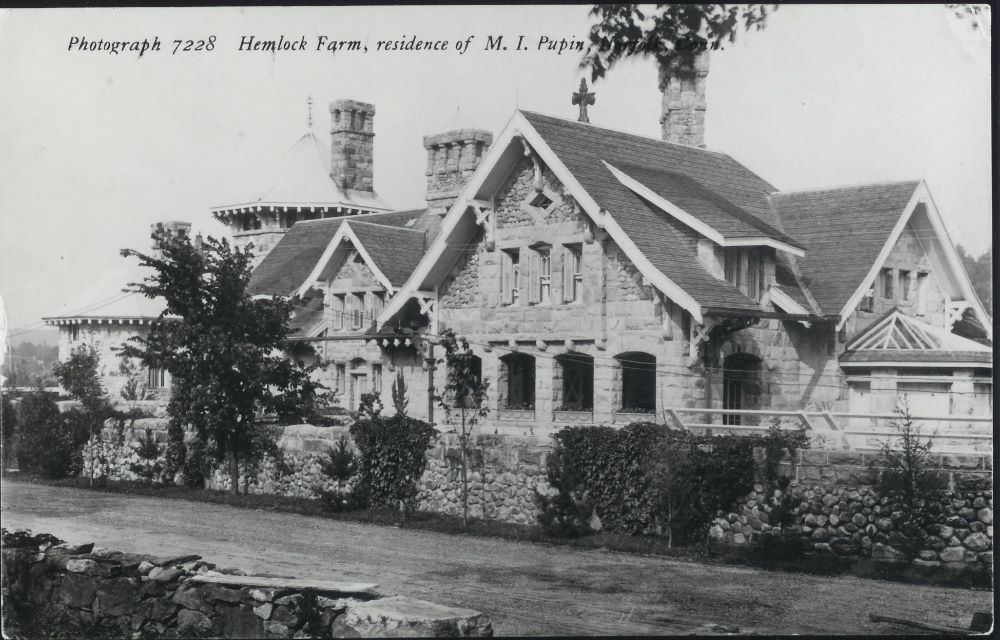A Look Into Norfolk’s Past
Exhibit Explores Pupin’s Haven of Happiness on Westside Road
By Patricia Platt
The Norfolk Historical Museum graces Norfolk’s village green with the reserve and understated elegance of a New Englander well worth getting to know. Visitors who step inside will find exhibits that tell the stories of the town’s past, often with intriguing ties to today’s residents. It’s a small town.
The museum’s current exhibit, Haven of Happiness, chronicles the life and times of Michael Pupin, an inventor of global renown and winner of the 1924 Pulitzer Prize in biography. Pupin was born to illiterate parents in Serbia in 1858 and spent his childhood working on farms. After his mother insisted that he attend school, he emigrated from Serbia to the United States. He had an outstanding career as a charismatic student-athlete at Columbia University and then attended Cambridge University and the University of Berlin. After being appointed a professor of physics at Columbia, Pupin distinguished himself in the scientific world by inventing the process for making photos of X-rays. He made his fortune by selling a patent for an induction coil for long-distance phone calling to AT&T.
In 1897, Pupin moved to Norfolk at the advice of his doctor, who hoped the healthy air and rural environment would help him recover from his depression after the unexpected death of his wife. In 1905, he built a Serbian-style castle on Westside Road, called Hemlock Hill Farm. Pupin said of his Norfolk farm: “This blessed spot, where I regained my health and happiness, became my real American home, and I have never had the desire to seek a better haven of happiness in any other place.” The Connecticut-Asian Culture Center currently owns the estate.
Pupin partnered with prominent Norfolk residents Helen Hartley Jenkins and Robbins Battell Stoeckel in a joint venture, Hemlock Hills Farm, Inc., to conserve and improve farmland in Norfolk. At one point they owned multiple sites totaling 1,800 acres. Pupin concentrated his efforts at his farm on Westside Road, where he raised livestock and market crops. He housed cattle under his office loggia and raised pigs and horses in several outbuildings.
Pupin and his close friend Jenkins cared deeply about Norfolk, and they contributed financially to several important projects, including the construction of the Royal Arcanum building in 1903 and the Center School in 1915. They bought property that included mills, tenement houses and a reservoir. They sought to resurrect industry in the town by leasing vacant factories to new companies. When the mills closed, they were torn down in order to preserve the beauty of the town.
Pupin and Jenkins’s friendship inspired some local gossip, some of which is explored in the exhibit. Although the rumor was debunked that there was an underground tunnel connecting Pupin’s castle home with her second home, the Terraces (located across the road), it is generally accepted that they were very close. Jenkins certainly embraced Serbian culture during the years they spent together. In 1909, they traveled unchaperoned by car from Paris to Serbia, where Jenkins bought the furniture that she later placed in Hillside, the “Serbian house” she built in Norfolk. During World War I, she was awarded a medal for her work in Serbia, and she later opened the Slavonic Immigrant Home in New York City. Pupin and Jenkins remained close for the rest of their lives.
The Haven of Happiness exhibit marks the 100th anniversary of Pupin’s Pulitzer Prize for his bestselling autobiography, “From Immigrant to Inventor.” For more information, see the society’s website at norfolkhistoricalsociety.org.

Michael Pupin’s Serbia-inspired castle is a highlight of the current Norfolk Historical Society exhibit.

